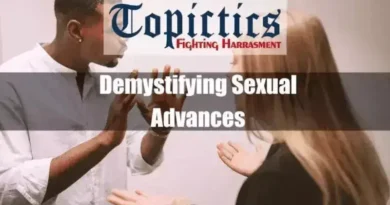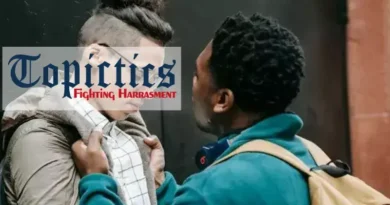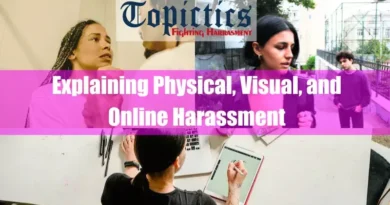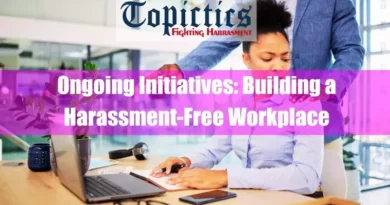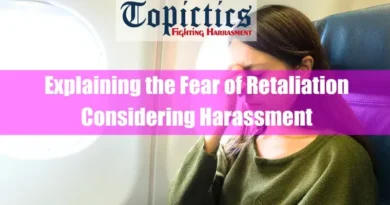Understanding Microassaults
Takeaways
| Key Points |
|---|
| Microassaults are deliberate, harmful actions or slurs meant to discriminate against individuals based on their marginalized identities, distinguishing them from other microaggressions that may be subtle or unintentional. |
| These acts can be verbal, such as using racial or homophobic slurs, non-verbal, like avoiding physical contact or making offensive gestures, or environmental, such as displaying hate symbols. |
| In professional and educational settings, microassaults can create toxic environments by fostering fear, mistrust, and exclusion, which negatively impact morale, productivity, and student well-being. |
| Legal frameworks like Title VII of the Civil Rights Act and Title IX mandate institutions to address such behaviors to prevent discrimination and harassment. |
| Ethically, organizations and schools are responsible for creating inclusive, respectful environments by implementing policies and training to address and prevent microassaults, ensuring all individuals feel valued and safe. |
Introduction to Microassaults
Definition of Microassaults
Microassaults are a specific type of microaggression characterized by explicit, intentional actions or slurs that are intended to harm or discriminate against a person based on their marginalized identity.
Unlike other microaggressions, which might be more subtle or unintentional, microassaults are deliberate and often manifest in direct, harmful ways. For instance, using derogatory language or symbols that convey hate, such as racial slurs or displaying swastikas, are clear examples of microassaults.
Distinguishing Microassaults from Other Microaggressions
Microaggressions can be categorized into three main types: microassaults, microinsults, and microinvalidations. While all are harmful, microassaults are unique in their directness and intentionality. Microinsults are often less overt and may come across as backhanded compliments or subtle snubs. Microinvalidations, on the other hand, dismiss or negate the experiences and feelings of marginalized individuals.
What sets microassaults apart is the clear intent to cause harm or express discriminatory views.
Characteristics of Microassaults

Intentionality in Microassaults
The defining characteristic of a microassault is its intentional nature. These premeditated actions are meant to marginalize or harm the targeted individual. The person committing the microassault is fully aware of the offensive nature of their behavior, which differentiates it from other forms of microaggressions where the perpetrator may not recognize the harm caused.
Common Forms of Microassaults
Microassaults can take various forms, including verbal, non-verbal, and environmental.
- Verbal Microassaults: This includes using racial slurs, homophobic language, or other derogatory terms that are meant to degrade or insult someone based on their identity.
- Non-Verbal Microassaults: Actions such as deliberately avoiding physical contact with someone of a different race or making offensive gestures fall under this category.
- Environmental Microassaults: These involve displaying symbols or messages promoting hate or discrimination, like wearing apparel with racist insignia or putting up offensive posters in public spaces.
Psychological and Social Impacts

Mental Health Consequences
Microassaults can have profound effects on the mental health of those who experience them. Victims often report feelings of anxiety, depression, and lowered self-esteem.
The direct and intentional nature of microassaults makes them particularly damaging, as they reinforce the individual’s marginalized status and can lead to long-term psychological trauma.
Impact on Social Relationships and Community Dynamics
On a social level, microassaults can erode trust and create divisions within communities. Individuals who experience microassaults may withdraw from social interactions, fearing further harm or discrimination.
This withdrawal can lead to isolation and weaken the sense of community among marginalized groups.
Cumulative Effects Over Time
The impact of microassaults is not limited to isolated incidents. Over time, repeated exposure to microassaults can cumulatively damage an individual’s mental and emotional well-being.
This buildup of stress and trauma can manifest in various ways, including chronic health issues and difficulties in personal and professional relationships.
Microassaults in the Workplace

Identifying Microassaults in Professional Settings
In the workplace, microassaults can be more challenging to identify, as they may be disguised as jokes or offhand comments. However, their impact is no less severe. Examples include using racial slurs in a casual conversation or excluding someone from professional opportunities based on their gender, race, or sexual orientation.
Effects on Work Culture and Employee Morale
Microassaults can significantly affect workplace culture by creating an environment of fear and mistrust. Employees who are targets of microassaults may feel devalued and disrespected, leading to decreased job satisfaction and morale.
This toxic atmosphere can also reduce overall productivity and hinder collaboration among team members.
Legal and Ethical Considerations
Organizations have a legal and ethical responsibility to address microassaults in the workplace. While laws like Title VII of the Civil Rights Act of 1964 do not explicitly mention microassaults, they fall under broader legal frameworks that prohibit discrimination and harassment based on race, sex, and other protected characteristics.
Failure to address microassaults can lead to legal consequences, including discrimination lawsuits.
Ethically, companies must foster a respectful and inclusive environment where all employees feel safe and valued. This includes implementing policies and training programs to prevent and address microassaults effectively.
Microassaults in Education

Identifying Microassaults in Educational Settings
Microassaults can manifest in various forms in educational environments, making them difficult to identify. These actions often occur through overt verbal attacks or exclusionary practices based on a student’s race, gender, or sexual orientation. For example, a teacher might consistently overlook students from marginalized backgrounds when selecting participants for advanced programs, or students might use racial slurs in conversations masked as jokes.
While sometimes dismissed as harmless, such behaviors have severe implications for the targeted individuals and the learning environment.
Effects on School Culture and Student Well-being
Microassaults within educational settings can profoundly affect school culture and students’ well-being. A school environment where microassaults are prevalent can foster fear, anxiety, and a sense of exclusion among students.
Those who are targets of these behaviors may feel alienated, leading to decreased academic performance, lower self-esteem, and increased absenteeism. The toxic atmosphere created by microassaults can also hinder collaboration and inclusivity, essential for a positive learning experience.
Legal and Ethical Considerations
Educational institutions have both legal and ethical obligations to address microassaults. Although Title IX of the Education Amendments of 1972 does not explicitly mention microassaults, these actions fall under broader legal frameworks that prohibit discrimination based on sex, race, and other protected characteristics.
Failure to address microassaults can lead to legal repercussions, such as federal investigations or lawsuits under Title IX, which requires schools to prevent and respond to harassment and discrimination.
Ethically, schools must create a safe and inclusive environment for all students. This includes implementing comprehensive policies and training programs to identify, prevent, and address microassaults effectively.
By doing so, schools can ensure that every student has the opportunity to learn and thrive in an environment free from discrimination and harm.
Scenarios
Examples from workplace scenarios demonstrate the concept in action, revealing how these incidents contribute to hostile environments.
For instance, a common workplace microassault might involve a situation where a woman is passed over for a promotion in favor of a less-qualified male colleague, accompanied by comments that imply her gender disqualifies her from leadership roles.
Another example could be a colleague displaying racist symbols or using derogatory language under the guise of humor, which directly targets and harms individuals based on their race or ethnicity.
These real-world examples highlight the intentionality behind microassaults and their damaging effects on individuals and organizational culture.
Addressing such incidents is crucial for maintaining a respectful and inclusive environment.
Analyzing these situations reveals that microassaults stem from underlying biases and prejudices. Prompt and effective responses are essential in mitigating their impact, supporting those targeted, and fostering a more inclusive workplace.
Responding to Microassaults

Strategies for Targets of Microassaults
Strategies to manage the emotional and psychological impact of microassaults are essential for individuals who experience them. One effective approach is to seek support from trusted friends, colleagues, or professional counselors who can provide a safe space to express feelings and validate experiences.
Documenting the incident can be valuable, especially if further action, such as reporting to a supervisor or HR, is needed.
This record can serve as evidence if the situation escalates or if similar incidents occur in the future.
Approaches for Bystanders and Allies
Bystanders play a crucial role in addressing microassaults. When witnesses intervene, they can disrupt the cycle of discrimination and support the targeted individual. Approaching the situation with empathy and a willingness to listen is key.
Bystanders should avoid minimizing the incident and instead acknowledge the harm done. For example, if a colleague witnesses a microassault, they might say, “I noticed that what was said seemed hurtful. Are you okay?” This simple acknowledgment can make a significant difference.
Bystander Intervention Techniques
When witnessing a microassault, bystanders can choose from the following five intervention strategies, often referred to as the 5 Ds:
- Direct: This involves directly addressing the behavior as it occurs. For example, if someone makes a derogatory comment, you can say, “That language is unacceptable and needs to stop.”
- Distract: This method defuses the situation by diverting attention. For instance, you might interrupt the interaction by asking the target a question or starting a conversation unrelated to the microassault.
- Delegate: If you’re uncomfortable intervening directly, you can seek assistance from someone else. For example, you might ask a supervisor, teacher, or authority figure to step in.
- Delay: If it’s impossible to act immediately, it’s important to check in with the targeted person afterward. For instance, you could say, “I’m sorry that happened. Are you okay? Is there anything I can do to help?”
- Document: Recording the incident can be useful if it’s safe. For example, you should discreetly take a video or write details of what happened to provide evidence.
These strategies equip bystanders with various intervention options, depending on the situation and their comfort level.
Each approach plays a vital role in disrupting harmful behavior and supporting those affected by microassaults.
Importance of Bystander Involvement
Bystander involvement is critical because it shifts the responsibility of addressing microassaults from the victim to the community. When bystanders take action, it sends a strong message that discriminatory behavior is not tolerated and that the targeted individual is not alone.
This collective response can create a more inclusive and supportive environment.
Institutional Responses and Support Systems
Institutions, whether workplaces, schools, or other organizations, have a responsibility to respond to microassaults in a structured and supportive manner. This includes having clear policies that define and prohibit microassaults and providing training on recognizing and addressing these incidents.
Support systems, such as counseling services, employee resource groups, and diversity and inclusion initiatives, should be readily available to those affected by microassaults.
Prevention and Education

Role of Training Programs in Reducing Microassaults
Training programs are a vital tool in preventing microassaults. These programs should educate participants on the nature of microassaults, their harmful effects, and the importance of creating an inclusive environment.
Effective training goes beyond raising awareness; it should also equip individuals with the skills to intervene and support those targeted. Role-playing scenarios, discussions, and real-world examples can reinforce these lessons.
Building Awareness and Promoting Inclusivity
Awareness campaigns are another essential component of preventing microassaults. These campaigns can include workshops, seminars, and public service announcements that highlight the impact of microassaults and promote a culture of respect and inclusivity.
Encouraging open dialogue about microassaults and other forms of discrimination can help dismantle the biases contributing to these behaviors.
Developing Policies to Address and Prevent Microassaults
Organizations must develop and enforce clear policies that address microassaults. These policies should outline the procedures for reporting incidents, the steps to investigate and address them, and the consequences for those who commit microassaults.
Policies should also emphasize the importance of supporting targeted individuals and ensuring they feel safe and respected in their environment.
Conclusion
Understanding microassaults is crucial in fostering environments where everyone feels respected and valued.
These deliberate acts of discrimination can have profound effects on the mental health and well-being of those targeted. However, through awareness, education, and collective action, we can work to prevent microassaults and support those who experience them.
By creating spaces where microassaults are recognized and addressed, we contribute to a more just and inclusive society.
FAQ
What is explicit racism in microassaults?
Explicit racism in microassaults refers to overt, intentional expressions of racial bias that manifest through derogatory language or actions designed to harm the targeted individual or group. This form of assault involves clear, conscious discriminatory behavior where the perpetrator openly communicates prejudicial beliefs, often through verbal insults or symbolic actions intended to reinforce social hierarchies.
How do ethnic slurs function as microassaults?
Ethnic slurs function as microassaults by serving as potent verbal attacks that directly target a person’s ethnic background, aiming to demean and dehumanize the individual. Their deliberate use reinforces harmful stereotypes and serves as a method to marginalize those based on cultural or racial identity.
What defines hateful stereotyping in microassaults?
Hateful stereotyping in microassaults involves applying oversimplified, negative assumptions to individuals or groups to convey contempt or hostility. This explicit reinforcement of harmful generalizations not only undermines personal dignity but also contributes to broader social biases.
How are coded hate symbols used in microassaults?
Coded hate symbols in microassaults are visual or linguistic markers that subtly express hostility while evading immediate detection as overt discrimination. They allow perpetrators to communicate bigoted sentiments indirectly, using recognized imagery or language that signals prejudice to those familiar with their connotations.
What is conscious discrimination in microassault behavior?
Conscious discrimination in microassault behavior refers to deliberate actions or remarks intended to undermine or demean individuals based on their identity. It is a calculated expression of bias where the perpetrator is aware of the social impact of their behavior, intentionally reinforcing existing prejudicial structures.
How is verbal derogation manifested in microassaults?
Verbal derogation in microassaults is manifested through the use of explicitly offensive language and clear insults aimed at demeaning a person’s identity. This direct communication of contempt not only targets an individual but also reinforces deep-seated cultural and historical prejudices through its language.
What role does nonverbal aggression play in microassaults?
Nonverbal aggression in microassaults includes hostile gestures, deliberate avoidance, or exclusionary body language that conveys a message of disdain without spoken words. Such actions, though subtle, communicate clear messages of rejection and inferiority, significantly impacting the target’s sense of belonging.
How does direct exclusion serve as a microassault?
Direct exclusion serves as a microassault by deliberately isolating individuals from social, professional, or communal interactions as a means to signal their perceived inferiority. This intentional act of marginalization not only damages the targeted individual’s self-esteem but also perpetuates discriminatory social hierarchies.
What is overt hostility in the context of microassaults?
Overt hostility in the context of microassaults refers to unmistakable, aggressive displays of bias that are openly directed at an individual or group. This form of assault leaves little room for ambiguity, as its explicit nature clearly communicates discriminatory intent through hostile actions or language.
How is intentional insulting used in microassaults?
Intentional insulting in microassaults is characterized by deliberately using demeaning and offensive language meant to attack and diminish a person’s identity. Such behavior is a calculated effort to inflict psychological harm, often drawing on historically loaded terms that exacerbate the impact of the insult.
What does discriminatory symbolism mean in microassaults?
Discriminatory symbolism in microassaults involves the use of images, signs, or symbols loaded with negative connotations to convey prejudice subtly. These symbols are strategically employed to communicate bias, tapping into historical and cultural associations reinforcing the targeted group’s marginalization.
How are racist caricatures employed in microassaults?
Racist caricatures in microassaults are employed through exaggerated, distorted representations that reduce individuals or groups to offensive stereotypes. This visual shorthand not only simplifies complex identities into harmful clichés but also perpetuates longstanding discriminatory narratives.
What is visible bias expression in microassaults?
Visible bias expression in microassaults refers to overtly displaying prejudicial attitudes through observable behaviors or explicit statements. These clear manifestations of bias leave no doubt about the discriminatory intent behind the actions, reinforcing negative perceptions of the targeted group.
How does aggressive marginalization manifest in microassaults?
Aggressive marginalization in microassaults manifests through deliberate strategies that exclude individuals from decision-making processes, social interactions, or access to resources. This systematic sidelining reinforces existing power imbalances and deepens the social and psychological wounds inflicted on the targeted groups.
What is explicit prejudice within microassault behavior?
Explicit prejudice within microassault behavior is the open and intentional expression of biased attitudes designed to devalue or demean an individual’s identity. It is exhibited through clear verbal, symbolic, or physical actions that leave no ambiguity about the presence of discriminatory beliefs, fostering an environment of overt hostility.




